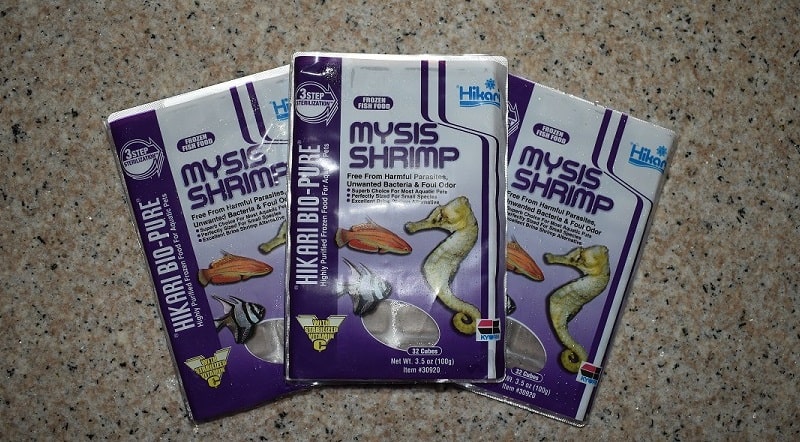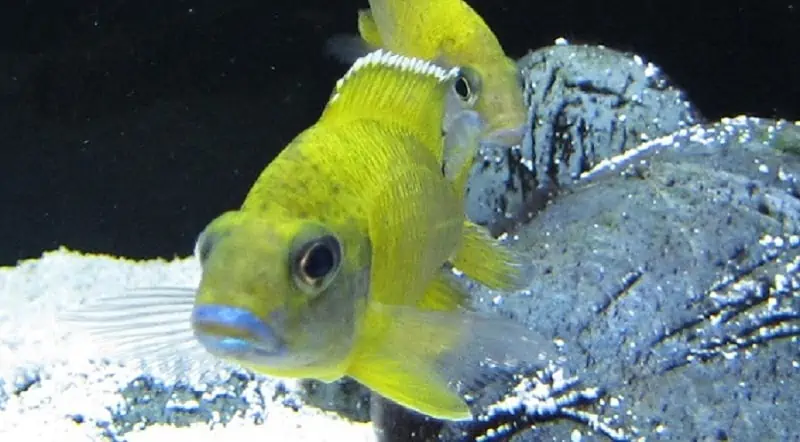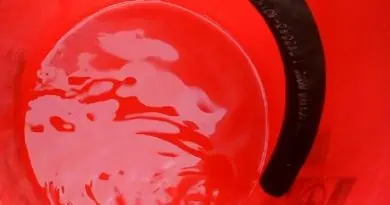What To Feed African Cichlids
African cichlids are big eaters. They always look hungry and will behave like they haven’t been fed in days each time I approach the tank. While it’s very enjoyable feeding these ravenous fish, overfeeding can cause serious health issues such as Malawi Bloat and impact the water quality.
Good quality cichlid pellets should form the staple part of your fish’s diet. Frozen food such as brine shrimp and mysis shrimp are great to feed once or twice a week. Avoid feeding bloodworms as they are difficult for African cichlids to digest.
While flakes are a great option for a tropical fish community tank, African cichlids need something more substantial and pellets are ideal. I would only feed flakes to young fry, once they are big enough, I would switch them to pellets.
What are the best pellets to feed African cichlids?
When researching into the best pellets to feed African cichlids, some of the frequent questions I see on forums are ‘what pellets will make my fish grow faster?’ and ‘what pellets are best to enhance color?’ From what I’ve experienced, any of the pellets mentioned later in this article will do a great job growing and coloring up your cichlids. However, there are other factors besides food that influence growth and color. The growth rate is greatly affected by tank size and water change frequency. Likewise, color is more dependent on aggression in the tank and the position of the fish in the tank hierarchy.
However, that being said you will achieve optimum growth, color and health if your cichlids are being fed a quality diet. I like to mix it up a bit and feed a variety of food rather than sticking to one particular brand of pellets.
My absolute favorite pellet to feed my fish is Northfin Cichlid formula. The reason I regard it so highly is because of the excellent quality of the ingredients and it doesn’t cloud the water as much as other pellets.
New Life Spectrum is a close second, it may even have better ingredients but it clouds the water quite a bit after feeding. I still feed it occasionally though.
This is what I look for when selecting cichlid pellets.
- Fish enjoy eating it
- Quality ingredients
- Doesn’t mess the water
- Price
It may take a bit of trial and error to find the brand of pellets you are happiest with. These are some of the pellet brands I use and can recommend.

Northfin Cichlid Formula is an excellent quality food. It has unparalleled popularity throughout the African cichlid community on YouTube. Some supporters mention colors popping, great fin growth and reduction of particles in the water after feeding. I can definitely vouch for the reduction in particles in the water when feeding Northfin, that is one of the key attractions for me.
I use the 3mm sinking pellets, which are ideal for the size of fish I am keeping. The pellets are rather hard and it may take a couple of feedings for your fish to adapt to the new food but that is quite normal when first introducing any new food.
Northfin can be quite expensive, especially if shipping fees need to be factored in. The best deal I have been able to find is on Amazon. The 2.5kg bag qualifies for free international shipping with Amazon Prime and this works out to be a nice 30% discount off the overall cost in my case.
Fluval Bug Bites Cichlid Formula for medium to large fish is another favorite of mine. It’s a large ‘slow sinking’ pellet. Very slow sinking, from what I’ve seen. The pellets float on the surface of the water for about a minute before starting to sink. My fish accepted Bug Bites straight away when I began feeding it.
What I like most about Bug Bites is the pellet size which is ideal for large peacocks and haps. My predator haps go absolutely crazy for Bug Bites.
New Life Spectrum is another great brand. The quality of the ingredients is probably the best of all the pellets I’ve used. Thera+A is the type of pellets I feed as it contains garlic which is good for fish health.
However, it does cloud the water quite a bit and the fish waste is a slightly reddish colour which is more obvious on the substrate. As with Northfin, it took a few feedings for the fish to accept the new pellets.
Hikari Cichlid pellets are usually the most readily available and cost-efficient option. While the ingredient list is not as impressive as the other pellets, the fish love this food. It does leave more particles in the water after feeding than any of the other pellets.
Hikari has a huge catalogue of food for various types of fish. The frozen food they offer is by far the best I’ve used.
Comparison of ingredients and guaranteed analysis:
| Northfin Cichlid Formula | Fluval Bug Bites Cichlid Formula | NLS Thera +A | Hikari Cichlid Bio-Gold+ |
| Whole Antarctic krill meal | Dried black soldier fly larvae | Krill | Fish meal |
| Herring meal | Salmon | Squid | Wheat flour |
| Whole sardine meal | Fish protein concentrate | Whole wheat flour | Brewers dried yeast |
| Wheat flour | Green peas | Fish | Corn gluten meal |
| Organic kelp | Potato | Garlic | Soybean meal |
| Guaranteed Analysis | Northfin | Fluval | NLS | Hikari |
| Crude Protein (min): | 40% | 40% | 39% | 45% |
| Crude Fat (min): | 5% | 12.5% | 9% | 5% |
| Crude Fiber (max): | 5% | 5% | 8% | 2% |
| Moisture (max): | 9% | 10% | 10% | 10% |
| Ash (max): | 9% | 9% | 9% | 15% |
What are the best frozen foods to feed African cichlids?
Frozen foods are great to feed a couple of times during the week. It is a natural food without any fillers. They don’t pack the same punch nutrition-wise as pellets but do have their own benefits.
- Natural type of food
- Does not contain fillers
- Fish enjoy eating it
- Helps with clearing the intestines
- Great for conditioning fish for breeding

| Guaranteed Analysis | Hikari Frozen Brine Shrimp | Hikari Frozen Mysis Shrimp |
| Crude Protein (min): | 4% | 4.2% |
| Crude Fat (min): | 0.5% | 0.3% |
| Crude Fiber (max): | 0.5% | 0.5% |
| Moisture (max): | 92% | 94.5% |
Other food options for African cichlids
In addition to the pellets and frozen food, larger carnivorous cichlids can be fed the below food. It’s important to cut into easy to swallow slices not chunks. Rinse it off well before feeding.
- Sliced fish
- Sliced prawn
- Pieces of crab stick
What foods to avoid feeding to African cichlids?
- Bloodworms are difficult for African cichlids to digest, causing a blockage in the fish’s intestines which can lead to bloat.
- Live food and feeder fish is not required and should be avoided. In addition to the possibility of introducing disease to your tank, there is a risk that one of your prized fish could get injured while chasing its food.
How often should you feed your fish?
One feeding a day is sufficient for adult fish, or you can split the same amount of food into two feedings. I like to use a mix of floating and sinking pellets and drop the food in at a few different places or in front of the filter return to disperse the food and give all the fish a chance to eat.
Young African cichlids can be fed twice or three times a day to achieve optimum growth.
For the health of your fish, you should avoid the practice of ‘pumping’ the fish with food in an effort to increase the growth rate. This can cause your cichlids to be blockier and more rounded than normal specimens.
Remember the more you feed the more waste will be produced and more water changes and tank maintenance will be required to control the nitrates.
A rest day once a week where no food is given is beneficial for your fish. As the saying goes. A hungry fish is a healthy fish!
Conclusion
Pellets are packed with nutrition and are the best food for African cichlids. I prefer to feed my cichlids a variety rather than sticking to one particular type of pellet. Don’t ignore frozen foods based on the low protein content, they have some great benefits such as helping to clear out the intestines and conditioning fish for breeding.
It’s fun to watch the frenzy of African cichlids feeding. However, overfeeding can cause serious health issues including bloat. Although your fish will act like they are starving any time you approach the tank, it is better that you stick with your planned feeding schedule.
Here is a link to my article on how to make your African cichlids grow faster, for those of you interested in more information on that subject.
Thanks for reading. If you found this article helpful, don’t forget to share 🙂



